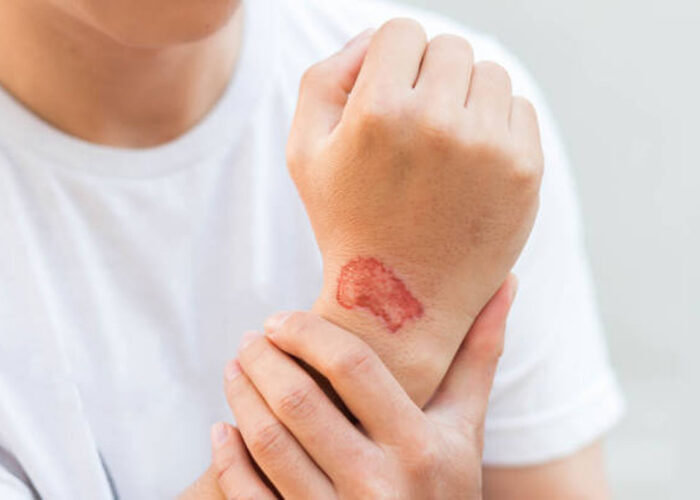Learn how to recognize warning signs of wound complications with our comprehensive guide. Ensure proper healing and prevent further complications.
Introduction
In this comprehensive guide, we will delve into the topic of wound complications and uncover the warning signs that you should be aware of. Wound complications can arise after surgical procedures or as a result of injuries, and it is crucial to recognize these signs early on to prevent further complications and ensure proper healing. Understanding the warning signs can help you take timely action and seek appropriate medical attention. So, let’s explore the various aspects of wound complications and equip ourselves with the knowledge to identify and address them effectively.
Wound Complications Uncovered: A Guide to Recognizing Warning Signs
What Are Wound Complications?
Wound complications refer to any issues that arise during the wound healing process. These complications can manifest in various forms and may include infections, delayed healing, dehiscence (the separation of wound edges), hematoma (localized bleeding), seroma (accumulation of fluid), or the formation of excessive scar tissue. Identifying these complications early is crucial for successful treatment and optimal healing.
Types of Wound Complications
Infection: The Silent Threat
One of the most common and concerning wound complications is infection. Infections can occur when bacteria or other microorganisms enter the wound site, leading to inflammation, redness, warmth, pain, and the potential for pus formation. If left untreated, infections can spread and cause severe complications. It is important to recognize the warning signs of infection and seek medical attention promptly.
Delayed Healing: When Time Becomes an Issue
Delayed wound healing is another complication that can occur. This happens when the wound takes longer than expected to heal and close. Factors that contribute to delayed healing include poor blood supply, underlying health conditions, certain medications, and improper wound care. Monitoring the healing progress and recognizing any delays in the process is crucial for appropriate intervention.
Dehiscence: The Wound That Won’t Stay Closed
Dehiscence refers to the separation of wound edges, either partially or completely, after a surgical procedure. This complication can occur due to excessive tension on the wound, inadequate suturing, or impaired wound healing. Dehiscence can be painful and increases the risk of infection. If you notice any signs of wound separation, it is important to seek medical attention immediately.
Recognizing Warning Signs
Red Flags to Look Out For
Recognizing the warning signs of wound complications is essential for timely intervention. Here are some red flags that you should be aware of:
- Persistent Pain: If you experience increasing or persistent pain around the wound site, it could be an indication of a complication. Pain that worsens instead of improving with time should not be ignored.
- Swelling and Redness: Swelling and redness around the wound area are common signs of inflammation. If these symptoms worsen or do not improve, it is important to consult a healthcare professional.
- Discharge or Pus: Any discharge or the presence of pus from the wound indicates a potential infection. Pus is often accompanied by foul odor.
- Delayed Healing: If the wound does not show signs of healing within the expected timeframe, it may be a warning sign of complications. Pay attention to any delays in the healing process.
- Fever and Chills: Systemic symptoms like fever and chills can indicate an infection spreading beyond the wound site. If you experience these symptoms along with other warning signs, seek medical help promptly.
FAQs about Wound Complications
Q: How can I prevent wound complications?
A: Preventing wound complications involves following proper wound care protocols, keeping the wound clean and dry, avoiding trauma to the area, and attending follow-up appointments with your healthcare provider.
Q: Can wound complications lead to long-term consequences?
A: Yes, if not addressed promptly, wound complications can lead to long-term consequences such as chronic infections, impaired wound healing, and the formation of excessive scar tissue.
Q: Are there any risk factors that increase the chances of wound complications?
A: Yes, certain factors increase the risk of developing wound complications. These include diabetes, obesity, smoking, immunosuppression, and poor nutrition.
Q: Should I remove the dressing if I suspect a wound complication?
A: It is best to consult your healthcare provider before removing the dressing. They will assess the situation and guide you on the appropriate course of action.
Q: Can wound complications be treated at home?
A: Mild wound complications may be treated at home with proper wound care and the guidance of a healthcare professional. However, more severe complications require medical intervention.
Q: What should I do if I suspect a wound complication?
A: If you suspect a wound complication, it is important to contact your healthcare provider immediately. They will evaluate the situation, provide a diagnosis, and recommend appropriate treatment.
Conclusion
Recognizing the warning signs of wound complications is crucial for ensuring optimal healing and preventing further complications. By understanding the different types of complications and being vigilant about any red flags, you can take proactive steps to address issues promptly. Remember to seek medical attention if you notice persistent pain, swelling, discharge, delayed healing, or systemic symptoms like fever and chills. With timely intervention and proper care, you can support the healing process and minimize the impact of wound complications.






No Comment! Be the first one.